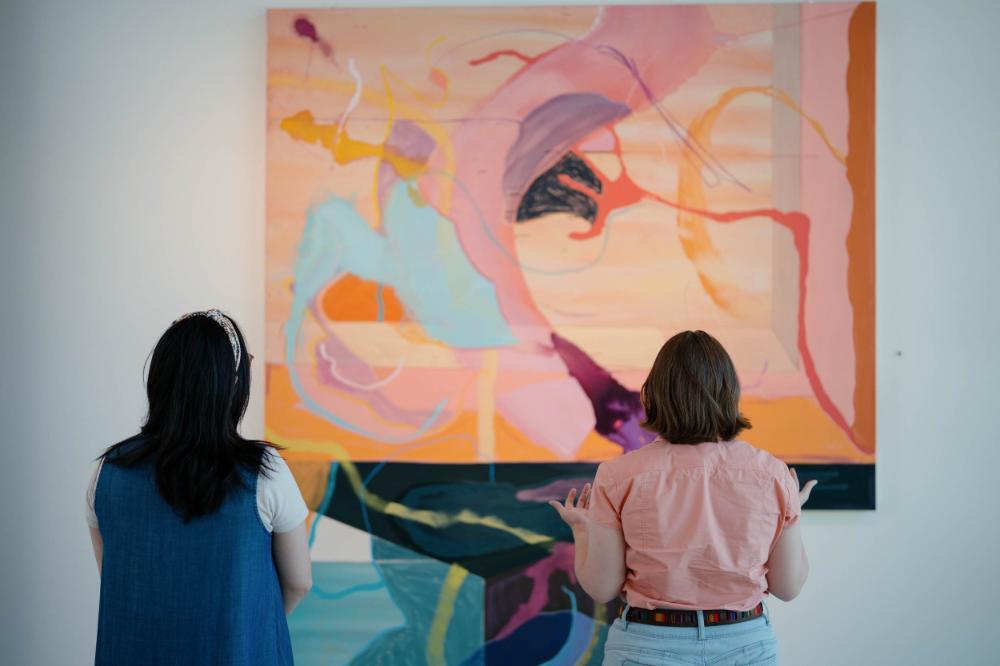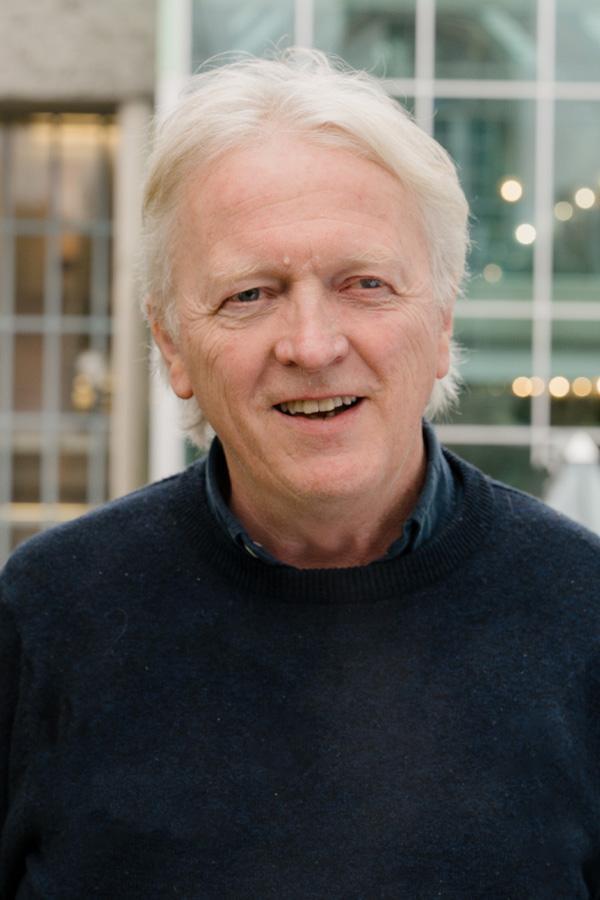Just before Easter I visited a tiny village in the south of England, well away from the usual tourist routes, to see a painting that is widely acknowledged to be one of the great treasures of modern British art. The fact that it’s housed here, in a very ordinary-looking building rather than in one of the prestigious galleries of Europe, is surprising enough. But even more remarkable is that this celebrated work also happens to be one of the most powerful expressions of Christian hope to have emerged in the 20th century. ". . . it was his intention that this memorial would have a strongly religious aspect, focusing not on the violence and terror in which the soldiers died, but on the beauty and sanctity of their everyday lives." The Sandham Memorial Chapel in the Hampshire village of Burghclere was specially designed and built in the 1920s to house a series of paintings by the English artist, Stanley Spencer, that commemorate his comrades who were killed in the First World War. Spencer (1891-1959) is an important figure in the history of modern art, a visionary for whom heaven never seemed to be very far away, and it was his intention that this memorial would have a strongly religious aspect, focusing not on the violence and terror in which the soldiers died, but on the beauty and sanctity of their everyday lives. He was inspired by the Scrovegni Chapel in Padua which contains Giotto’s wonderful 14th-century frescoes depicting the life of Christ, and he wanted Sandham, similarly, to be his own “holy box” dedicated to the memory of his friends.
Spencer served in the Royal Army Medical Corps in the Great War of 1914 to 1918, first at a hospital in Bristol, then on the frontline in Macedonia, and there’s no doubt that he saw more than his fair share of the dead and injured. But the art at Sandham isn’t primarily concerned with that. The side walls of the chapel are covered with a series of paintings celebrating the ordinary things of the soldiers’ lives—kit inspection, filling their water bottles at a fountain, sorting the laundry, treating the wounded, sharing a cup of tea, preparing the dugouts. They’re a beautiful witness to friendship, compassion, and the goodness of human life, even amidst the horrors of war.
Marvellous though these works may be, however, there’s one huge painting on the front wall that dominates the entire room, and it’s this that I wanted to see more than anything else. At first sight it seems to be exactly what you would expect in a painting of the First World War—a devastated landscape strewn with debris, the earth itself broken and ruptured, bodies everywhere—sadly, the kind of thing we’re all too used to seeing in news reports from Gaza and other war zones.
But a closer look tells you that’s not the story at all. A great upheaval is certainly taking place here, but it’s not due to the violence of war. The ground is opening up to allow life to spring forth. The tangled wreckage is made up of crosses that are falling as men emerge from their graves. Some of them look startled as they become conscious. Others are reaching out joyously to greet their friends with a handshake or a hug. One man is winding up his puttees, the long strips of cloth that soldiers wore to protect their legs. Another is reaching out from his grave to pick up a tortoise that also seems to be returning to life. And in the centre of the painting four mules killed in battle are stirring as they, too, discover that the resurrection includes them. Nearby, a soldier who is lying on his stomach is gazing in wonder at a crucifix on the ground below him. And in the very top of the painting, a number of men are presenting their crosses to the risen Jesus himself.
The painting is called The Resurrection of the Soldiers, and it’s Stanley Spencer’s extraordinary expression of faith in the resurrection of Christ and its implications for all of us. I love its sheer physicality and thoroughly anti-Platonic stance. These are not ethereal spirits being released from the tomb of material existence, but embodied human beings relishing their resurrected, creaturely status in a creation that is, in its entirety, being renewed. This is a vision that, far removed from the materialism of Karl Marx and others, owes its origins to the earthy creation accounts of the Bible and to the prophetic hope of “a new heaven and a new earth.”
“I became aware that everything was full of special meaning, and this made everything holy. The instinct of Moses to take his shoes off when he saw the burning bush was very similar to my feelings. I saw many burning bushes in Cookham.” Stanley Spencer was raised in a strongly Christian family in the village of Cookham on the banks of the river Thames in Berkshire, and from childhood his imagination was gripped by the Bible stories that his father loved to tell him. Like many of his contemporaries, however, and especially after the First World War, he became overwhelmed by the sense that life is meaningless, and he found himself asking the question, “Is Christ adequate in this?” As an adult, he was never what might be called a conventional believer, and in his personal life he certainly caused much pain and anguish to the people who loved him most. Nevertheless, the great narratives of the Bible continued to impress themselves upon him, and “quite suddenly,” he wrote, “I became aware that everything was full of special meaning, and this made everything holy. The instinct of Moses to take his shoes off when he saw the burning bush was very similar to my feelings. I saw many burning bushes in Cookham.”
Spencer sensed the holy at work in ordinary places and people, especially in his home village which he described as “a holy suburb of heaven,” and he frequently visualized biblical events as happening there. His painting, The Last Supper (1920), for example, is set in a nearby mill where grain was ground into malt, and in Christ Carrying the Cross (1920) the action takes place in front of his own house in Cookham High Street. He depicted many biblical scenes in this way, but throughout his life it was the resurrection of the dead that captured his imagination above all.
Stanley Spencer’s most famous painting, and the one that sealed his reputation as a great artist, is The Resurrection, Cookham (1924-1927), which was hailed by The Times newspaper as the most important British work of the century. It’s a painting on a massive scale which attempts to give the resurrection of the dead a universal meaning. All manner of people are seen emerging from their graves in the churchyard—whites and blacks, saints and prophets, contemporaries from the village and identifiable individuals like his wife, Hilda, and Spencer himself. And they’re doing all kinds of things: a woman is smelling a flower as though for the first time, parents are hugging their children, people are reading their own tombstones, which, as the artist himself remarked, “must be a rather wonderful thing to do.” It’s a stunning vision of peace and fulfilment, where no one is anxious to rush away, but all are content in their resurrected state to celebrate the gift of life.
During the Second World War (1939-1945), Spencer became a war artist for the British government and was stationed at Port Glasgow in Scotland. Port Glasgow was a ship-building town, and he documented the important war work that was taking place there. But the much-loved biblical theme remained very much on his mind and eventually led to an entire series of resurrection paintings set in the town. In one of them (Rejoicing) the inhabitants of Port Glasgow are shown in the immediate aftermath of resurrection: there’s dancing going on; a woman is cutting the grass near the grave from which she’s just been raised; another is carrying a vase of flowers; parents are playing with their children; and a throng of people have their arms raised in praise and delight, all rejoicing at the new life that they are experiencing.
"Heaven comes down to the earth in Spencer’s art, and earth is taken up into heaven." It seems to me that Stanley Spencer’s vision, seen in all of these paintings, and especially in The Resurrection of the Soldiers at Sandham Memorial Chapel, is not just of a future event that awaits us at the end of time, but the possibility of hope and change in the present. And this is why the paintings of all the ordinary, mundane activities of the soldiers around the side walls of Spencer’s “holy box” are intimately related to the one overtly “religious” image at the front. For it seemed to him that “every army incident was a coin . . . on the unseen face of which was the Resurrection.” Heaven comes down to the earth in Spencer’s art, and earth is taken up into heaven. This is a vision of the dignity, nobility, and transcendence that is to be found in ordinary life. There is joy because God is present.
Spencer continues to challenge me, and every viewer of his work, to believe that resurrection can be experienced in the present. That life can be transfigured. That we don’t need to despair. The same God who raised Jesus Christ from the dead still has the power to bring light and meaning into the darkest of places and change to the most hopeless of situations. As I think Stanley Spencer understood very well, that’s the beauty of Easter.

